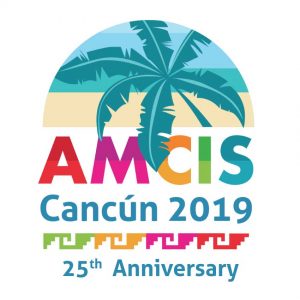Abstract
Temporal structures are commonly used to activate and structure asynchronous differentiation to achieve organizational goals. They provide a foundation for human beings to construct the regularity of our society and lives. With today’s globalization of information technologies, business, work and personal lives’ boundaries are being dramatically blurred. Although the existing organizational temporal structures are effective in terms of capturing explicit temporal structures that are regularly used to govern their employees, they are incapable of capturing new emerging temporal structures, which are likely to significant impact today’s knowledge workers’ productivity and businesses’ competitive advantages, when organizations become more agile than before. This research aims to provide an update on identifying these implicit temporal structures, and then to propose new design paradigms how to seamlessly integrate them to organizational temporal structure systems to streamline the relationships of these increasingly complicated temporal structures imposed by technologies, more agile organizational structures and practices, given these ever-changing temporal structures are usually manually captured and recorded by individuals. Thus, it is important for today’s organizations/businesses to be proactive to manage these emerging temporal structures to be competitive. Accordingly, this research-in-progress study proposes a field interview study with a group of knowledge workers to understand the complexity of today’s emerging temporal structures in organizations and their impacts on individual workers. Lastly, this study also aims to propose a strategic way to digitalize these emerging temporal structures to support today’s business growth in a long run.
Recommended Citation
Wu, Dezhi, "Understanding and Digitalizing Emerging Temporal Structures for Competitive Advantages" (2019). AMCIS 2019 Proceedings. 7.
https://aisel.aisnet.org/amcis2019/treo/treos/7
Understanding and Digitalizing Emerging Temporal Structures for Competitive Advantages
Temporal structures are commonly used to activate and structure asynchronous differentiation to achieve organizational goals. They provide a foundation for human beings to construct the regularity of our society and lives. With today’s globalization of information technologies, business, work and personal lives’ boundaries are being dramatically blurred. Although the existing organizational temporal structures are effective in terms of capturing explicit temporal structures that are regularly used to govern their employees, they are incapable of capturing new emerging temporal structures, which are likely to significant impact today’s knowledge workers’ productivity and businesses’ competitive advantages, when organizations become more agile than before. This research aims to provide an update on identifying these implicit temporal structures, and then to propose new design paradigms how to seamlessly integrate them to organizational temporal structure systems to streamline the relationships of these increasingly complicated temporal structures imposed by technologies, more agile organizational structures and practices, given these ever-changing temporal structures are usually manually captured and recorded by individuals. Thus, it is important for today’s organizations/businesses to be proactive to manage these emerging temporal structures to be competitive. Accordingly, this research-in-progress study proposes a field interview study with a group of knowledge workers to understand the complexity of today’s emerging temporal structures in organizations and their impacts on individual workers. Lastly, this study also aims to propose a strategic way to digitalize these emerging temporal structures to support today’s business growth in a long run.


